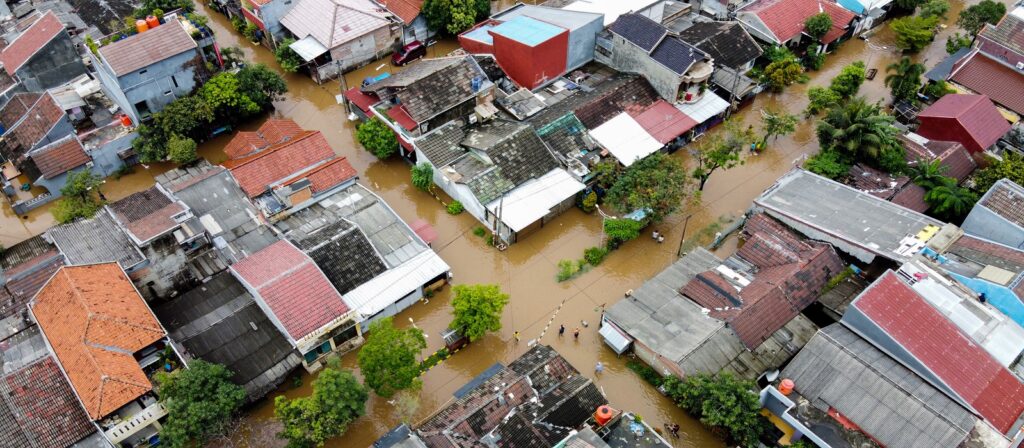We are pleased to share this latest guest blog from ICMIF Supporting Member Gallagher Re. The blog is the second in Gallagher Re’s Climate Explainer series and was written by Marie Ekström and Connor Gray. The series focuses on the work that the Intergovernmental Panel on Climate Change (IPCC) has done to consolidate the scientific consensus on climate change impacts, the role of the (re)insurance industry in addressing climate risk and the challenges ahead.
There aren’t many four-letter acronyms that can claim universal recognition, but the IPCC is entering this ubiquitous state, as the globally coordinated research of the Intergovernmental Panel on Climate Change draws the attention of an ever-growing audience.
Having published accredited climate change assessments since the late 1980s, the IPCC released its latest report in its sixth assessment report (AR6) in February 2022. This Working Group II report provides a consolidation of the scientific consensus covering climate change impacts, vulnerabilities, and the capacity of the natural world and humans to adapt.
AR6 has concluded that climate change poses an “unequivocal” threat to human well-being – with risk increasing with additional warming, and hazards interacting in a manner unlike present processes. If there was any prior doubt, this has thrown down a gauntlet to the (re)insurance industry to now apply the IPCC’s dedicated work and underlying research to drive proactive risk management of climate risk.
The role of the (re)insurance industry in addressing climate risk
The Working Group II state with very high confidence that “Any further delay in concerted anticipatory global action on adaptation and mitigation will miss a brief and rapidly closing window of opportunity to secure a livable and sustainable future for all.” The role of the (re)insurance industry in both mitigation and adaptation is now very apparent – with many major insurers and reinsurers having already committed to the decarbonization of their portfolios and growing collaborative efforts on adaptation mechanisms such as public-private parametric schemes.
Indeed, the report cites the following from Hill and Martinez-Diaz (2019) on the role of industry in driving wider adaptation efforts “full accounting of climate risk in insurance and financial lending decisions could similarly act as such social tipping point interventions for adaptation”. This statement reaffirms that (re)insurers as capital owners and evaluators of risk have a major role to play in driving climate adaptation. This isn’t without precedence; it is well established that prudent insurers will seek to incentivize de-risking measures from lowering home insurance premiums where sprinklers are installed in a property under warranty, to lowering motor premiums for young drivers who install black boxes. The industry is once again well placed to being the driving force behind societal resilience in the face of growing climate risks.
Hard and soft adaptation limits
Another pertinent takeaway from the IPCC’s latest report is that a lack of financial investment is limiting climate adaptation. This report sets out limits to adaptation as either “hard limits” or “soft limits”. Firstly, “hard limits” are those which cannot be overcome by innovation, such as the unavoidable societal consequences of the loss of coral reefs to the remote islands of Boigu in Australia (Evans et al., 2016). Importantly, this report outlines that hard limits increase with additional warming and hence the industry will need to respond to the losses associated with hard limits being reached. Furthermore, future risk will need to consider current risk mitigation measures that face hard adaptation limits and so will cease to be effective with additional warming. Consequently, the growing area of climate conditioned catastrophe risk modelling and long tail risk management decisions will need to consider not only the peril-impacts of climate change but account for the reduced efficacy of adaptation measures in a future climate.
Alternatively, “soft limits” are those for which current adaptation measures to overcome intolerable risks exist to but are not currently available. An example of overcoming a soft limit is upgraded drainage systems reducing urban flood risk – perhaps currently limited by land-use planning practices but implementable with the right investment of time and financial resources. The report states that, “Financial constraints are important determinants of soft limits to adaptation across sectors and all regions (high confidence)”. Hence, the support of the insurance industry is a requirement of the successful implementation of solutions to these soft limits to adaptation and thus societal resilience to growing climate risks.
Compounding and cascading risks
Cascading risks events are triggered by a previous risk event with which the risk interacts, alternatively, compounding risks are those that occur simultaneously and interact. The IPCC’s latest report underlines how climate change is set to exacerbate many instances of cascading physical risks, concluding with high confidence that “concurrent and repeated climate hazards occur in all regions, increasing impacts and risks to health, ecosystems, infrastructure, livelihoods and food”. As a specific example, Moftakhari et al (2017) noted that ‘the compounding effects of sea-level rise, extreme coastal high tide, storm surge, and river flow can substantially increase flooding hazard and impacts on freshwater systems’.
Coupled with compounding climate hazards are regionally cascading risks. Urban environments are particularly sensitive to cascading risks, where a prevalence of impermeable surfaces, such as concrete, do not allow water to drain into the subsurface soil and rock and thus can exaggerate local flood risk when storms bring heavy precipitation. This poses a greater challenge to the insurance catastrophe analytics community in quantifying the change in physical risks to a portfolio under a future climate.
Conclusion
If the 2020s so far have reminded us of anything, it is how interconnected the world has become. As highlighted by the IPCC’s work, our vulnerability to climate-related risks has intensified and will continue to do so, challenging the stability of regional and international food, water, and energy supplies amongst other risks. For the industry to remain relevant in a changing climate, (re)insurers must tackle the challenges posed by climate change mitigation and adaptation head on. To achieve this, the industry must fully embrace its raison d’être of protecting society, by fast-tracking climate risk into its collective business model.
Read all the Climate Explainer Series blogs from Gallagher Re here.
Gallagher Re is a Gold sponsor of the ICMIF Centenary Conference in Rome in October 2022 and will be represented at the event by delegates from its UK and Japan offices. James Kent, Global CEO, will speak in the Conference session “Leading with purpose” on Wednesday 26 October.
Learn more about Gallagher Re here.






